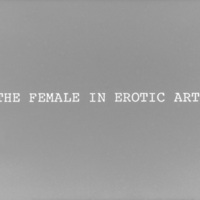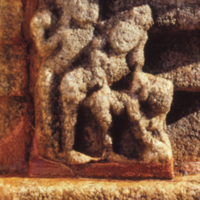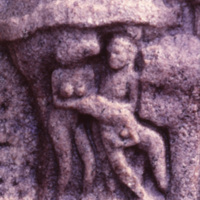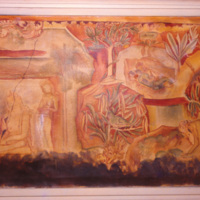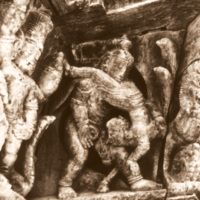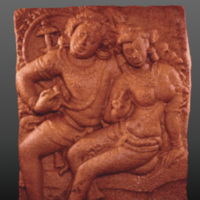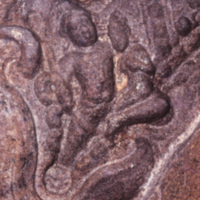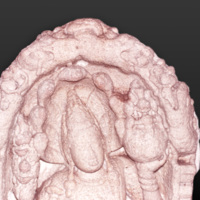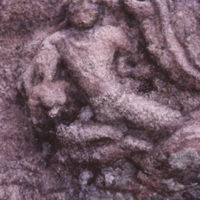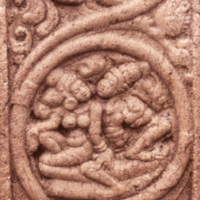Main Menu
AORC Libraries
Browse Items in The female in erotic art (12 total)
The female in erotic art
Description: The female in erotic art: It is noteworthy that eroticism is not a pervasive phenomenon in early Sri Lankan art and extreme forms of it are very few and far between. Rather more frequent are amorous couples, usually described as mithuna figures.
Contributor: Co-Author: Seneviratna, Harsha
Collection: Women in Sri Lankan Sculpture and Painting
Tags: AISLS, ICES, PDWESLSP, The female in erotic art
Erotic art
Description: Associated with Buddhist Tantric ritual is this sculpture of the male and female in an erotic posture, carved on the outside wall of the 8th century A. D., Nalanda Gedige, Sri Lanka.
Contributor: Co-Author: Seneviratna, Harsha
Collection: Women in Sri Lankan Sculpture and Painting
Tags: AISLS, ICES, PDWESLSP, The female in erotic art
Erotic art
Description: The group here is part of a forest scene carved on the balustrade flanking the steps of a building near the Thuparama stupa at Anuradhapura, Sri Lanka. It is an erotic embrace involving more than two people. The composite sculpture, which seem to represent a mythical scene, is thought to belong to the 8th century A. D.
Contributor: Co-Author: Seneviratna, Harsha
Collection: Women in Sri Lankan Sculpture and Painting
Tags: AISLS, ICES, PDWESLSP, The female in erotic art
Erotic art
Description: Painted on the walls of the Tivanka image house at Polonnaruwa, Sri Lanka, are a man and woman having intimate physical relations. The scene an illustration of the Asamkha Jataka, is now obliterated, but this picture taken from a copy made in as early as 1909 can be seen at the National Museum in Colombo. The paintings of the Tivanka image house can be dated to the 12th or 13th century A.D.
Contributor: Co-Author: Seneviratna, Harsha
Collection: Women in Sri Lankan Sculpture and Painting
Tags: AISLS, ICES, PDWESLSP, The female in erotic art
Eerotic art
Description: This slide was made from a photograph available in the Department of Archaeology. An erotic scene associated with Hindu belief, this particular wood carving is found on a processional car at the Hindu temple at Palali in Jaffna. It is thought to be fairly old.
Contributor: Co-Author: Seneviratna, Harsha
Collection: Women in Sri Lankan Sculpture and Painting
Tags: AISLS, ICES, PDWESLSP, The female in erotic art
The 'Lovers of Isurumuniya'
Description: Popularly known as the ‘Lovers of Isurumuniya’, this is perhaps the best known amorous couple in early Sri Lankan sculpture. Dated to about the 6th or 7th century A. D. and considered by some as divine by others as human, the relief finds a prominent place at the Museum in the Isurumuniya temple premises.
Contributor: Co-Author: Seneviratna, Harsha
Collection: Women in Sri Lankan Sculpture and Painting
Tags: AISLS, ICES, PDWESLSP, The female in erotic art
A woman on the lap of a man
Description: Amorous couples, showing the female sitting on the lap of the male, figure among the auspicious symbols coming out of the jaws of the dragon or makara in ornamental arches associated with Buddhist temples of the late Anuradhapura period. On the lintel of a stone doorway at the Isurumuniya temple is this couple, one of a pair on either side of the arch, disgorged by the dragon.
Contributor: Co-Author: Seneviratna, Harsha
Collection: Women in Sri Lankan Sculpture and Painting
Tags: AISLS, ICES, PDWESLSP, The female in erotic art
An amorous couple coming out of the jaws of makara
Description: This makara arch frames a naga guardstone, originally from one of the Abhayagiri Vihare buildings, and presently housed in the Archaeological Museum at Anuradhapura. Amorous couples are seen coming out of the jaws of the dragon.
Contributor: Co-Author: Seneviratna, Harsha
Collection: Women in Sri Lankan Sculpture and Painting
Tags: AISLS, ICES, PDWESLSP, The female in erotic art
An amorous couple coming out of the jaws of makara.
Description: Mithuna couples are also seen on one of the makara reliefs at the Vijayarama temple in Anuradhapura. As in most other examples, the female emerges out of the makara jaws before the male in whose lap she sits.
Contributor: Co-Author: Seneviratna, Harsha
Collection: Women in Sri Lankan Sculpture and Painting
Tags: AISLS, ICES, PDWESLSP, The female in erotic art
An amorous couple on a pillar
Description: This couple forming part of the ‘Tree of life’ or Kalpavruksa carved on one of the stone pillars at the Atadage in Polonnaruva bears a close resemblance to the ‘Isurumuniya Lovers’. It probably belong to the period, 11th to the 12th centuries A.D.
Contributor: Co-Author: Seneviratna, Harsha
Collection: Women in Sri Lankan Sculpture and Painting
Tags: AISLS, ICES, PDWESLSP, The female in erotic art



